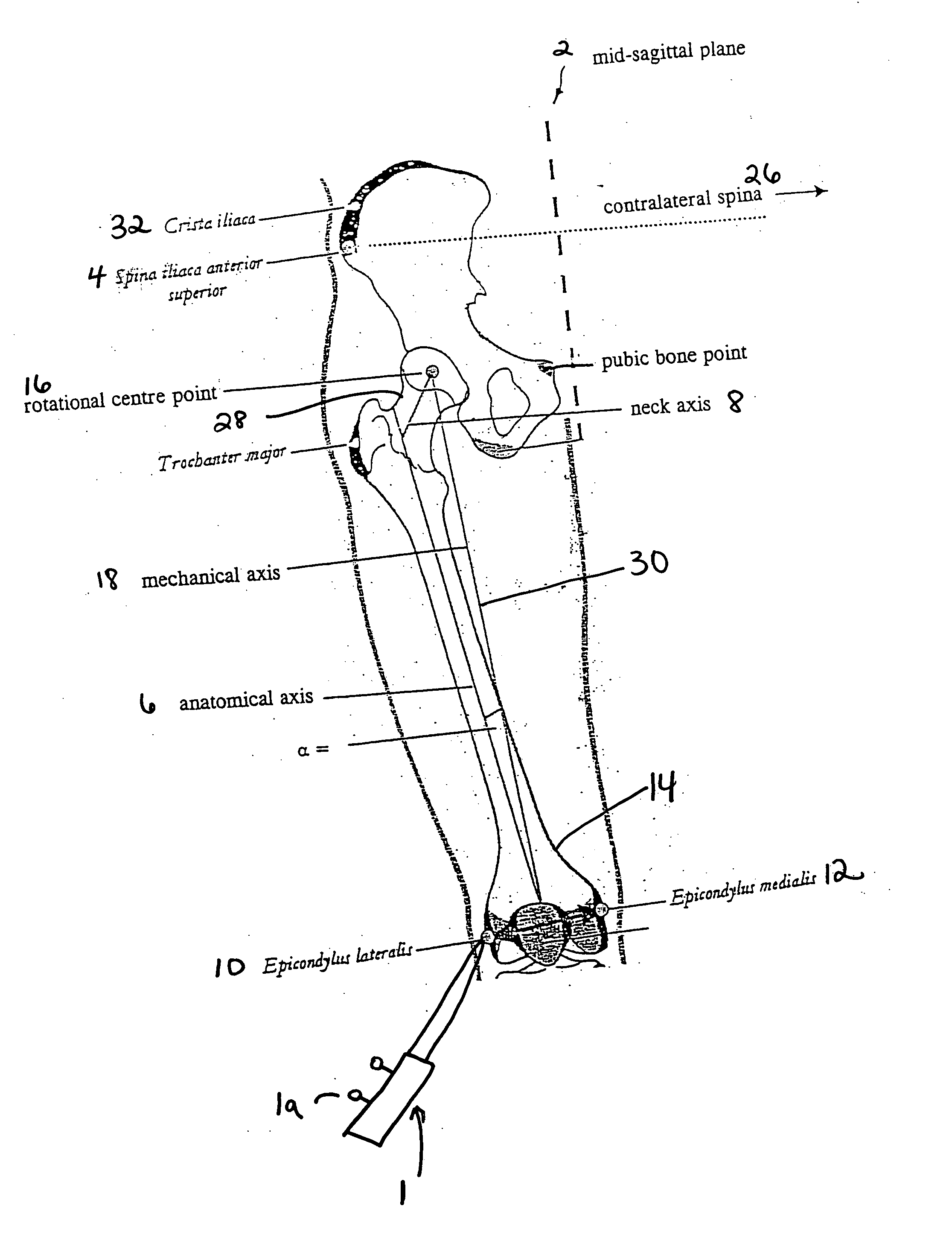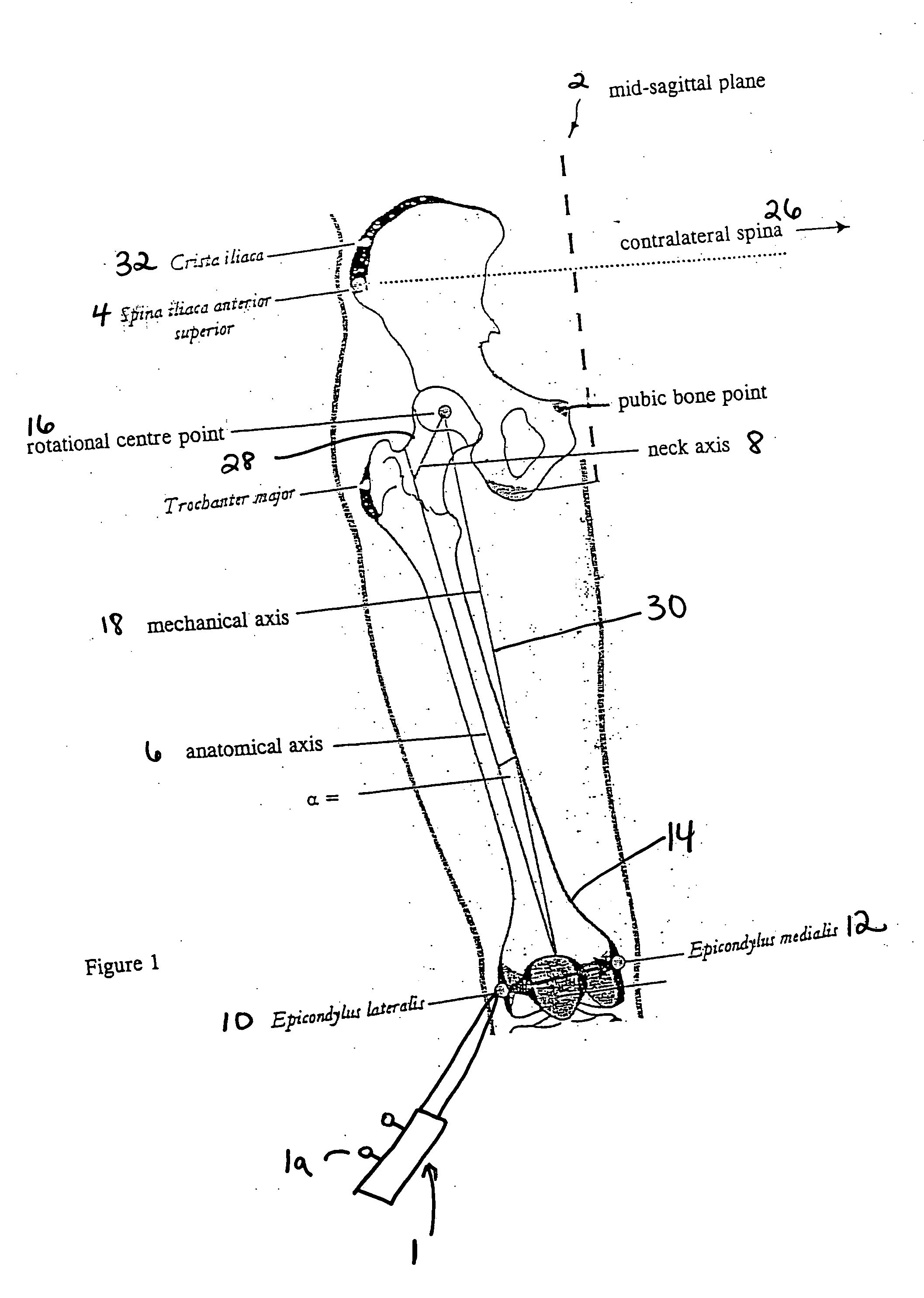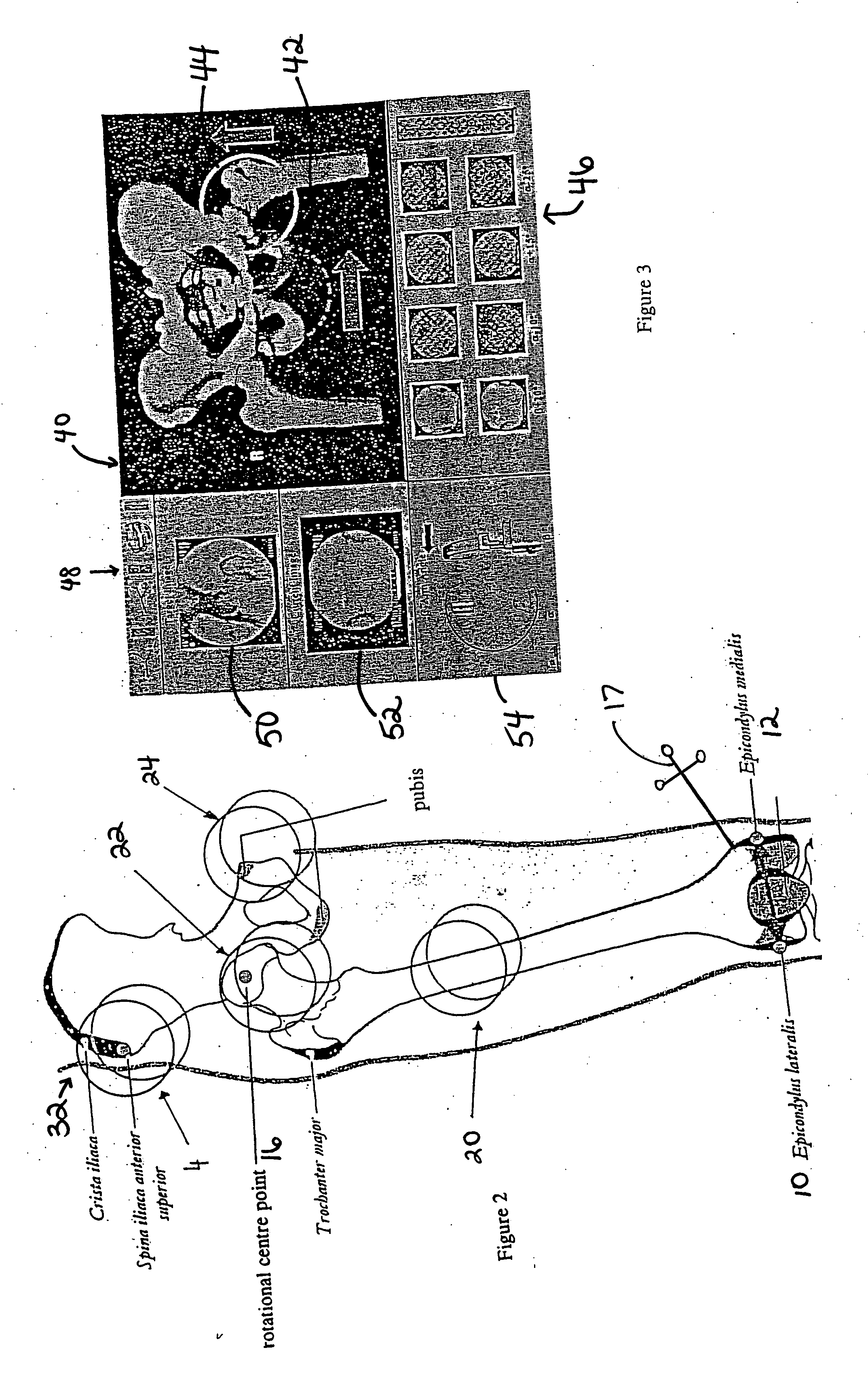Method and system for generating three-dimensional model of part of a body from fluoroscopy image data and specific landmarks
a three-dimensional model and image data technology, applied in the field of three-dimensional model generation of a body part, can solve the problems of increasing radiation load on the patient and the operating staff, awkward purely fluoroscopic navigation, and corresponding radiation load on the patient and sta
- Summary
- Abstract
- Description
- Claims
- Application Information
AI Technical Summary
Benefits of technology
Problems solved by technology
Method used
Image
Examples
Embodiment Construction
[0019] The invention will now be described in more detail on the basis of generating a model that can be used in hip operations. It should be appreciated, however, that the present invention can be applied to other medical procedures, and reference to hip operations is not intended to be limiting in anyway.
[0020] The invention provides a navigation method based on a three-dimensional model generated from two-dimensional fluoroscopic image recordings and specific landmarks of a part of the body. As a result, the three-dimensional orientation of the human pelvis is improved with respect to prior techniques, thereby enabling an implant to be suitably positioned in surgical total hip replacement procedures. This includes not only the hip bone but also the femur.
[0021] Two orientation parameters are important when positioning a cavity implant: the cavity anteversion and the cavity inclination. These two parameters relate to a hip coordinate system that is defined by the anatomy of the ...
PUM
 Login to View More
Login to View More Abstract
Description
Claims
Application Information
 Login to View More
Login to View More - R&D
- Intellectual Property
- Life Sciences
- Materials
- Tech Scout
- Unparalleled Data Quality
- Higher Quality Content
- 60% Fewer Hallucinations
Browse by: Latest US Patents, China's latest patents, Technical Efficacy Thesaurus, Application Domain, Technology Topic, Popular Technical Reports.
© 2025 PatSnap. All rights reserved.Legal|Privacy policy|Modern Slavery Act Transparency Statement|Sitemap|About US| Contact US: help@patsnap.com



